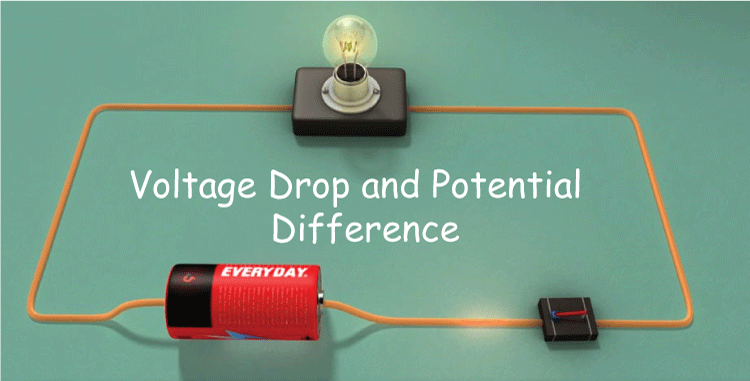Voltage drop and Potential difference
Voltage drop and potential difference are fundamental principles in electrical engineering that play an essential position in the knowledge and analysis of electrical circuits. These principles help engineers and technicians evaluate the conduct and efficiency of electrical systems, ensuring the right functioning of diverse devices and additives. Potential Difference:Potential distinction, also called voltage, refers back to the difference in electric powered potential among two factors in an electrical circuit. It is denoted by using the symbol "V" and is measured in volts (V). Electric potential is the amount of electric potential strength consistent with unit rate at a particular point in a circuit. When a rate actions from a point of better potential to some extent of decrease capability, it reports a capacity difference. Potential difference can be the concept of using pressure that pushes electric powered charges through a circuit. It is chargeable for going with the flow of cutting-edge technology, that's the movement of electric expenses. In easy terms, capacity distinction creates an electrical strain that causes electrons to transport from one factor to another, thereby enabling the flow of power. Voltage Drop:Voltage drop refers back to the decrease in voltage that happens as cutting-edge flows via a conductor or an electrical element. It is measured in volts (V) and indicates the loss of electrical strength because of the resistance encountered by means of the present day. According to Ohm's law, voltage drop is immediately proportional to the modern passing via the conductor and the resistance of the conductor. When contemporary flows via a conductor, it encounters resistance, which may be because of factors which include the conductor's material, duration, and move-sectional vicinity. This resistance converts electrical electricity into warmth, causing a discount inside the voltage. The voltage drop can be calculated using Ohm's regulation: V = I × R, wherein V represents the voltage drop, I represents the cutting-edge, and R represents the resistance. Voltage drop is an essential consideration in electric circuit layout and analysis. Excessive voltage drop can cause a lower in the performance of electrical gadgets and might even motivate malfunctions or screw ups. It is specifically critical in programs where specific voltage stages are required, which includes digital circuits, power transmission, and distribution systems. Mitigating Voltage Drop:To reduce voltage drop and make certain the efficient operation of electrical systems, several measures may be taken:
Difference between Voltage drop and Potential differenceCertainly! Here's a desk highlighting the important thing differences between voltage drop and ability difference:
These points outline the distinctions among voltage drop and potential difference, emphasizing their personality traits and roles in electric circuits.
Next Topic#
|
 For Videos Join Our Youtube Channel: Join Now
For Videos Join Our Youtube Channel: Join Now
Feedback
- Send your Feedback to [email protected]
Help Others, Please Share









